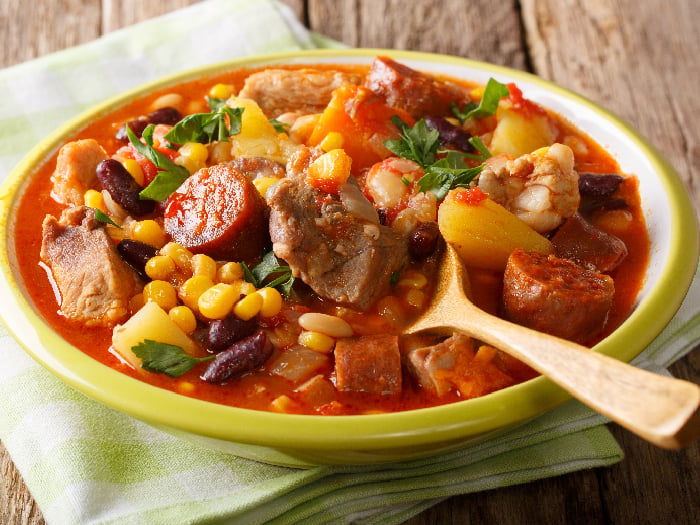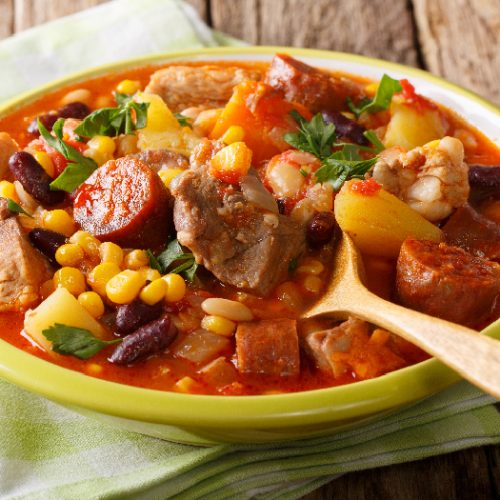No dish has ever ruled a country like cachupa rules in Cape Verde. Hearty, brothy, dry, meaty, or frugal, it takes many shapes, forms, and flavors in the colorful archipelago. With West African cuisine gaining momentum, it’s slowly but steadily making its way across the world, particularly in American menus. In many ways, it is the perfect dish for every millennial. It’s exotic with lesser-known global origins, it can be made vegan, and it is full of flavor. You can also tailor it to your budget and vegan/vegetarian/meat/fish/egg-eating preferences.
What is Cachupa?
Cachupa is the national dish of Cape Verde. Not surprising, given the many ways it is eaten in the islands. Like many rustic dishes, it has a high dose of carbs with beans in brothy sauce, which can be enriched by adding meat. This dish also encapsulates the history of its homeland. It represents the mish-mash of its traditional influences, from its European colonial past, American proximity, and an influx of people from Asia and Africa.

The hearty and flavorful cachupa. Photo Credit: Shutterstock
How to Make Cachupa?
Cachupa has many versions. The refogada version is fried while the guisada is soupy. The cachupa sabe is made with meats for special occasions. Even more special is our recipe of cachupa rica which uses different meats, sausages, and fish for a rich version. Since it is typically made in large quantities, it also makes for a perfect meal when feeding a crowd.

Hearty Cachupa Rica Recipe
Ingredients
- 3 cups dry hominy
- 1 cup dry red beans
- 1/2 cup lima beans
- 1 large onion chopped
- 1 tbsp garlic minced
- 500 gm salted pork chopped
- 250 gm blood sausage sliced
- 500 gm tuna or cooked meat
- 1 small cabbage chopped
- 1 large sweet potato cut into chunks
- 1 lb plantain
- 1 cup squash cubed
- 2 bay leaves
- 1 can tomato
- 1 lb yam
- 1 handful cilantro leaves fresh
- salt & pepper to taste
- olive oil
- 4-6 cups water
Instructions
- Soak the dry red beans, lima beans, and hominy overnight. Drain the water, washing the beans thoroughly. Add the water and bay leaves to the beans and let it cook till they become tender.
- In a separate pan, saute the chorizo slices and let its oil seep out. Add the rest of the meat and fish.
- When the meats are fried, add the vegetables and saute them together. Add some salt and cover the pan. Let the vegetables and meats cook till tender.
- When the vegetables are well-cooked, add these to the beans with the can of tomatoes and further cook them for 2-3 hours. Take care that there is enough water to maintain a thick broth-like dish.
- When the cachupa is cooked, take it off the stove. Add the cilantro just before serving. It is best enjoyed with plain rice.
Notes
What to do with leftovers?
Given the usual large quantity, it is quite likely that you may have leftovers. The usual tradition is to serve leftovers as breakfast. The soupy dish is fried up with onions till it dries and then served with eggs.
If you want to know more about West African cuisine, here is a detailed article on its delicious flavors. Do tell us about your experience with cachupa and how you like it.
